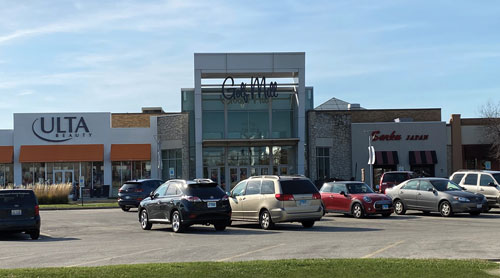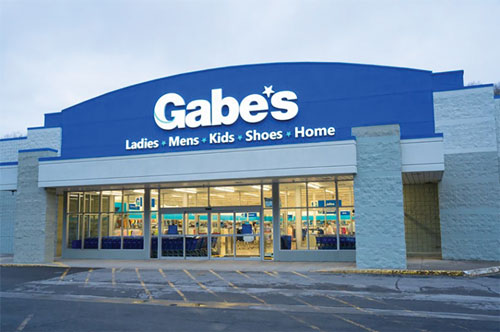By the BF Staff
From the November/December 2021 Issue
Retail companies must focus on five key trends in the year ahead in order to transform their businesses into shopper-first organizations, according to Publicis Sapient’s inaugural “2022 Retail Guide to Next’’ report.
“As retailers adapt to changing customer behaviors and strive for transformational growth, it is critical for them to consider how they incorporate new customer needs and expectations into their current business models,” said Sudip Mazumder, Publicis Sapient’s Retail Industry Lead, North America. “In 2022, retailers must continue to reimagine their businesses for the new age of retail, from evolving as platforms and transforming their store experiences by integrating online and offline to monetizing data, investing in financial services products and optimizing return costs by focusing on a better customer experience.
1. Evolve As Platforms To Create One-Stop Shopping For Customers: Retailers today are expanding into community, content and a broader product selection. According to Publicis Sapient, the future winners of retail will be those that build a connected ecosystem of related services that customers can engage with through one seamless experience. Shoppers want to interact with retail brands that offer convenience. Retailers that create value-enhancing, differentiated ecosystems are able to provide a range of items specific to their category, which can become a convenient “one-stop shop” for consumers. Publicis Sapient also found that nearly half of shoppers (49%) chose to buy from online marketplaces and 39% were more likely to buy from a marketplace that offers a wide selection of products.
2. Reimagine Store Experiences By Integrating Best of Online and Offline: Over the last 18 months, retailers have faced lockdowns and restrictions, resulting in a surge in e-commerce that has changed consumer expectations and the role of physical stores. While the shift to online shopping shows no signs of slowing, Publicis Sapient found 52% of U.S. consumers plan to make the majority of their department store purchases in stores this holiday season. In 2022, a seamless integration of online and offline will be critical to success. According to Publicis Sapient, 55% of consumers sometimes go to a physical store to check out an item before purchasing it online. By integrating data across web, mobile, storefront and inventory channels, retailers can digitally expand their physical footprint while providing the experiences shoppers want.
3. Monetize Data To Increase Brand Engagement and Sales: There are many ways a shopper can engage with a brand, and each provides an opportunity to deliver personalized communications. Publicis Sapient found 37% of shoppers who buy online would like personalized offers based on spending preferences, while 31% want personalized content to help them shop. Retailers must break down data silos within their organizations to gain a better understanding of their customers’ preferences. Connected data from point-of-sale transactions, website traffic, email engagement and media impressions enable retailers to create targeted campaigns, personalized offers and customer-centric products and services.
4. Transform As Financial Companies: Many retailers offer financial services or connect customers with financial services providers as a natural extension of their retail function. By leveraging technology and the vast data they have on their customers, retailers are unlocking a large customer base that is either under-banked or has no current banking relationships but still needs financial services like loans, advice or payments.
5. Optimize Returns By Delivering Better Customer Experiences: With a rise in online shopping comes an increase in returns. Publicis Sapient found that only 38% of shoppers are satisfied with the ability to try products online. And 46% of people said that when shopping online, they are more likely to buy from a brand that offers easy returns. By knowing the customer, retailers can get ahead of returns. Data is key to improving customer experiences and operational efficiency.
Retail Opportunities Abound In The Village of Niles
The Village of Niles, IL is a dynamic retail market with over 4.5 million square feet of retail space within its two distinct trade areas, including the Golf Mill Shopping Center, Four Flaggs Shopping Center, Golf Glen Shopping Center, Point Plaza and Village Crossings. Niles boasts two Walmart stores, two Target stores, two Home Depot stores, two Fresh Farms Stores, three Jewel-Osco stores, one Super HMart and a Costco store, among many others. Niles generated over $1.5 billion in retail sales and was ranked 8th in the Chicago Metropolitan Area in 2020 for retail sales and 2nd for retail sales per capita.
Niles has a vast array of economic development opportunities to capitalize upon in the next several years. The Village will enter into a public/private partnership with the Sterling Organization to redevelop Golf Mill Mall, a 1.1-million-square-foot enclosed regional mall anchored by Target, JC Penney, Ross, Ulta Beauty and Burlington. The Village Board has demonstrated strong leadership with a commitment to utilize tax increment financing and other incentives for the renaissance of the mall and surrounding shopping centers. The redevelopment envisions a master-planned, mixed-use development featuring retail, restaurant, entertainment, hotel, medical office, residential and recreational uses. The project will also strengthen the commercial corridors around the mall which will provide addition retail opportunities.
Niles is a great place to reside and do business with the vibrancy of urban and suburban amenities with a 2020 (Census) population of over 30,000 residents (5.83 square miles), and a strong sense of “it’s possible here.” Niles is bounded by the City of Chicago on the south and west, Skokie and Morton Grove on the east, Glenview on the north and Park Ridge and unincorporated Cook County on the west. Milwaukee Avenue traverses the length of the village diagonally. The Cook County Forest Preserve brings nature to the doorstep of the residents with the North Branch of the Chicago River flowing through the eastern part of the community. The community’s assets have attracted residents, commercial and industrial business. Niles is also a short drive from Interstate 94 and Interstate 294, and only minutes from Chicago O’Hare International Airport.
Niles offers best in class services, low taxes and multi-modal transportation access. With urban professionals, young families and senior citizens, this community embraces its ethnic diversity. Manufacturing and distribution entities include Coca-Cola, Shure and the Bradford Exchange. A diversity of business type provides balance and stability. There are more than 1,000 smaller commercial, industrial and office-based businesses supporting the economic profile of Niles.
Niles has four TIF Districts and has used tax increment financing to fund development and redevelopment on a “pay as you go” basis. It has judiciously used sales tax incentive programs as part of a business attraction initiative or business retention program. The Village typically requires an existing business to undertake a major expansion in order to increase the sales tax revenue stream beyond a base amount of sales, the board would then consider a sales tax rebate of some portion of the sales tax revenue stream above the base. The board has also adopted the Cook County Class 6b property tax incentive program which allows an industrial business to reoccupy a vacant industrial building and pay property taxes based upon 10 percent of market value instead of 25 percent for the first 10 years. In the 11th year, the business would pay 15 percent of market value, then 20 percent in the 12th year. In year 13, the property is taxed back at 25 percent of market value, a significant savings over the life of the program.
Niles has also adopted the Cook County Class 7a and Class 7b programs for the reoccupation of vacant commercial buildings and redevelopment of blighted properties. The Class 7 programs have an identical incentive to the Class 6b program described above.
Niles has stimulated job growth and investment with the development of big box shopping centers, freestanding retailers, restaurants and industrial development. Since Niles is a fairly mature community, much of the future job growth and investment will be fueled by redevelopment of blighted and obsolete commercial and industrial facilities. The Village will also promote manufacturing given its proximity to interstate highways, rail and airports. The Village of Niles boasts of some of the highest retail sales of any suburban Chicago community in general merchandise, grocery and home improvement categories.
Gabe’s Picks Greater Springfield, OH For Distribution Center
Gabriel Brothers Inc. recently broke ground on a new distribution center in Springfield, OH at the PrimeOhio II Industrial Park. At over 850,000 square feet, it will be Gabe’s largest distribution center. Expected to open in February 2023, the $77.5 million project will create more than 800 full- and part-time jobs over five years. Positions will include material handlers, packers, sorters, equipment operation, truck drivers, counters, maintenance, administration, supervisors and managers.
“Gabe’s is thrilled to join the incredible Springfield community,” said Jason Wolter, Executive VP and COO for Gabe’s. “It is our commitment to build a state-of-the-art facility and run a top-tier operation that will contribute positively on behalf of all Ohioans.”

Gabe’s current distribution centers process hundreds of trailers weekly and millions of cartons annually. The company efficiently distributes products to 119 stores throughout the states of West Virginia, Delaware, Georgia, Kentucky, Indiana, Ohio, North Carolina, New York, New Jersey, Pennsylvania, South Carolina, Tennessee and Virginia.
“Ohio’s economic outlook is strong, and the fact that Gabe’s chose Ohio for its largest fulfillment center in the nation is a testament to substantial advantages of doing business here,” said Gov. Mike DeWine. “Ohio is proud to support this economic growth in Clark County through assistance from JobsOhio and the Ohio Department of Development, and we are looking forward to seeing this fulfillment center and its 800 new employees thrive.”
“We are excited about this project and the partnership between Gabe’s, the Springfield CIC, JLL, and NorthPoint,” said Tim McElroy, VP of Development with NorthPoint Development. “As developers we believed in the location along I-70 and a welcoming Springfield community, so it’s rewarding to have Gabe’s select this location for the same reasons. We look forward to welcoming Gabe’s as a NorthPoint customer with the unparalleled service we are known for.”
“From our first discussions with site developer NorthPoint Development and the company’s consultant, JLL, we knew Gabe’s would be a great addition to our community,” said Horton Hobbs IV, VP/President of Economic Development for the Greater Springfield Partnership. “Gabe’s vision for growth aligned with the community’s location and unmatched workforce.”
JLL coordinated site selection, business consulting and project management services for the facility. “With the strong growth in the nation’s industrial market, it can be difficult to find the desired location for companies looking to expand,” said JLL International Director Meredith O’Connor. “We’re pleased to have been able to help Gabe’s find the ideal space—one that will help create jobs and further bolster the city’s economy.”
“We are excited that Gabe’s sees the opportunity the greater Springfield community offers from quality of life, workforce and ability to help them grow,” said Mike McDorman, President and CEO of the Greater Springfield Partnership. “The many years of effort to make the PrimeOhio II Industrial Park a great site has paid off. Gabe’s is a perfect fit for the park and a great addition to our community. This investment is exactly what we envisioned for the park.”
“Gabriel Brothers distribution facility leverages Springfield’s logistical advantage to support their national retail operations and brings hundreds of jobs to Clark County. We’re thrilled to welcome them to the Prime Ohio II park and look forward helping them build a bright future in Ohio,” added Jeff Hoagland, President & CEO, Dayton Development Coalition.












![[VIDEO] Get More for Your Business in Ardmore. Oklahoma](https://businessfacilities.com/wp-content/uploads/2024/02/maxresdefault-324x160.jpg)
